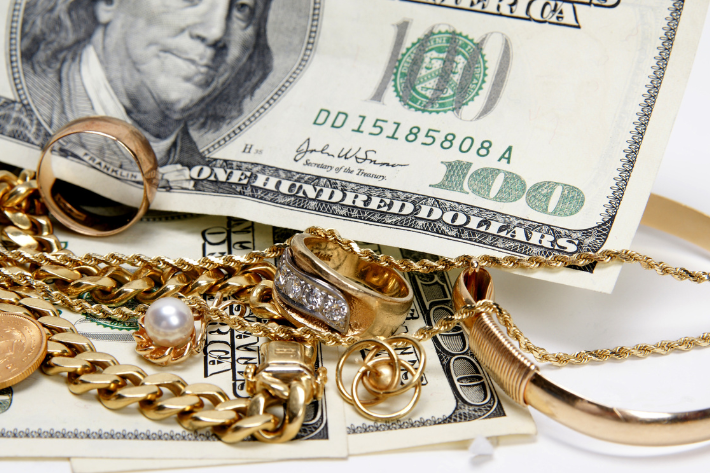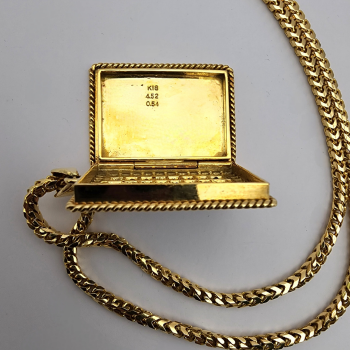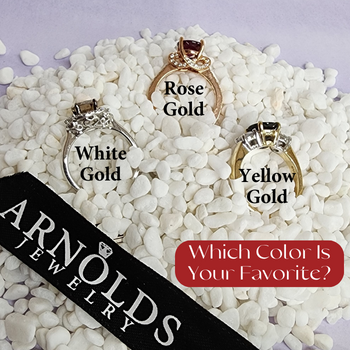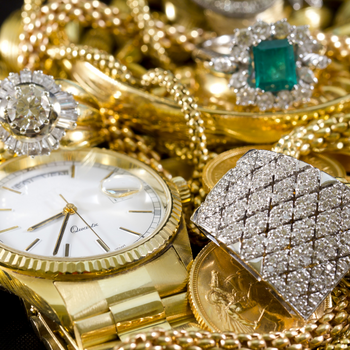Does Gold Jewelry Increase in Value?

Gold jewelry has always been considered a secure investment. It is a timeless piece of accessory that is not only stunningly beautiful but also a store of value. While gold has been used in the shape of currency across the globe for centuries, its presence in the jewelry market is equally strong. If you plan to invest in gold jewelry, you may wonder: does gold jewelry increase in value? Let’s dive into what to know about the purity of gold, how the color of the gold may affect its value, and everything else you need to know before investing.
Understanding the Purity of Gold
The purity of gold is measured in carats and denotes the amount of gold that is present in the overall metal. In most countries, gold jewelry is sold in 14k, 18k, and 22k variants, varying in the amount of gold concentration. The higher the carat, the more valuable the jewelry. It’s also important to note that pure gold is soft and malleable, making it unsuitable for jewelry. Hence, other metals are mixed with it to make it sturdy. Thus, when you’re picking a piece of jewelry, make sure that you’re considering the carat concentration to understand its market value. Here’s a breakdown of common gold purities and their impact on value:
- 24 Karat Gold (99.9% Pure): Pure gold is the most malleable and ductile metal, making it susceptible to scratches and bending. While it’s the most valuable in terms of purity, it may not be the most practical for jewelry due to its softness.
- 18 Karat Gold (75% Pure): This is a popular choice for high-quality jewelry. It combines gold’s beauty with added durability from alloyed metals, such as copper or silver. It strikes a balance between purity and strength.
- 14 Karat Gold (58.3% Pure): Often considered the standard for fine jewelry in the United States, 14 karat gold provides both durability and a golden hue while maintaining a reasonable level of purity.
- 10 Karat Gold (41.7% Pure): This is the minimum karatage for gold jewelry in many countries. It offers durability but contains less pure gold, which can affect its value.

The Color of Gold May Affect Its Value
The color of the gold has a considerable impact on its value. Yellow gold is the most traditional color and is the most sought-after due to its rarity. While rose gold is quite common, white gold has gained popularity over time. Yellow gold jewelry will typically hold more value than white and rose gold.
- Yellow Gold: The classic, warm hue of yellow gold is highly sought after and maintains its value well. It’s the most traditional and timeless choice for jewelry.
- White Gold: White gold is created by alloying gold with white metals like nickel, zinc, or palladium. It’s a contemporary and elegant choice. However, over time, white gold may require rhodium plating to maintain its bright white color, incurring extra costs.
- Rose Gold: The pinkish hue of rose gold is achieved by adding copper to the alloy. Its unique color has gained popularity recently, making it a fashionable choice. Like yellow gold, it generally holds its value.

Does Gold Jewelry Increase in Value Over Time?
Yes, gold jewelry has been known to increase in value over time. As gold is a universal currency, its value remains stable even during economic crises. Moreover, the demand for gold never seems to cease, contributing to its appreciation in value.
However, you cannot expect this appreciation to occur overnight. You must give it enough time to yield higher returns on investment. While gold jewelry can be a valuable asset, it doesn’t necessarily increase in value at the same rate as other forms of gold investment, like bullion or coins. Several factors affect the value of gold jewelry:
- Market Conditions: The value of gold jewelry is heavily influenced by the current market conditions for gold. The price of gold can fluctuate significantly over time.
- Craftsmanship and Design: Unique and well-crafted pieces with artistic or historical significance may appreciate in value beyond the intrinsic value of the gold. Designer jewelry also holds more value because it is highly desired among consumers.
- Antique and Vintage Jewelry: Older pieces of gold jewelry, especially those from famous designers or eras like Art Deco or Victorian, can become collector’s items and increase in value over time.
- Sentimental Value: The sentimental value attached to gold jewelry can make it priceless to its owner but doesn’t necessarily translate into increased market value.

Investing in Gold for Long-Term Value
Investing in gold jewelry has a wide range of benefits as a long-term investment. Gold has a stable value, which makes it an excellent investment that can act as a safeguard against inflation or any form of economic downturn. Moreover, gold is universally recognized, making it easier to sell once you’re ready to cash in. However, you should keep in mind that investing in gold jewelry should be done with due diligence, taking into consideration its purity, rarity, and condition.
Investing in gold jewelry is an excellent way to invest in a long-term asset that has proven to hold value over centuries. While it may not provide immediate returns, it provides a safeguard against inflation and economic crises. It’s vital to consider the purity of gold and the color of the gold to understand its market value. And since investing in gold jewelry requires due diligence, ensure you’re buying it from a reputable source. As you add gold jewelry to your investment portfolio, you can enjoy its beauty while securing your wealth.
Looking to invest in Gorgeous Gold Pieces?
-
Categories:
- Jewelry Trends
- Jewelry Trends & Gift Ideas
